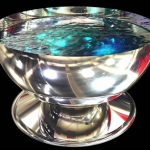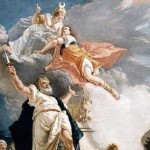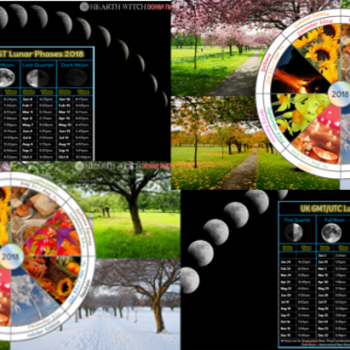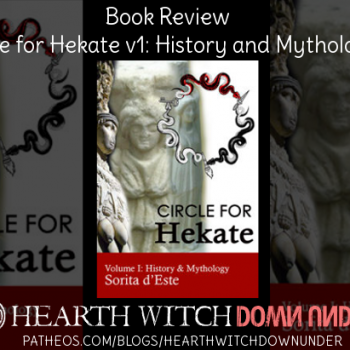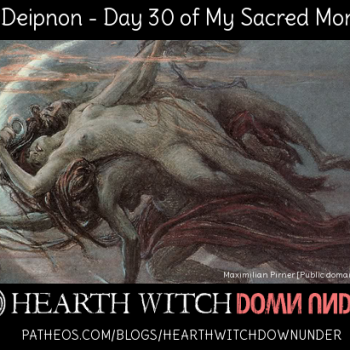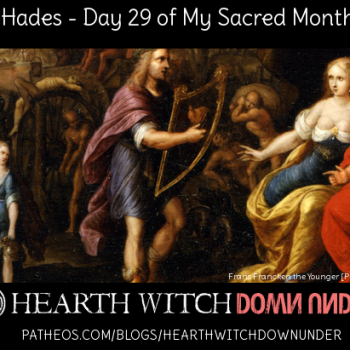Mythology is a funny thing when it comes to tracing the origins and family of all the Gods. Nearly every single one of Them has multiple sets of parents and multiple origin stories. Some of these origin stories are somewhat in contradiction of each other. In this post I am going to explore one of the origin stories of Hekate, that in which she is apparently human.
First a reminder of the Hesiodic (thus commonly believed) origins of the Goddess. In this, She is the daughter of Perses and Asteria, who are Titans and so Hekate is also a Titan. She is older than the Olympians, and honoured by Zeus and is seen as extremely powerful with command over the three realms of earth, ocean and the heavens.
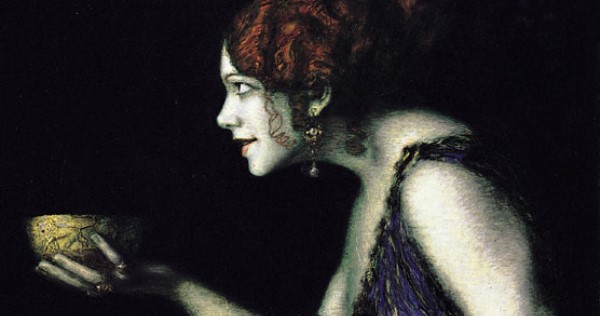
Hekate the Cruel Princess
“We are told, that is, that Helius had two sons, Aeetes and Perses, Aeetes being king of Colchis and the other king of the Tauric Chersonese, and that both of them were exceedingly cruel. And Perses had a daughter Hecate, who surpassed her father in boldness and lawlessness ; she was also fond of hunting, and when she had no luck she would turn her arrows upon human beings instead of the beasts. Being likewise ingenious in the mixing of deadly poisons she discovered the drug called aconite and tried out the strength of each poison by mixing it in the food given to the strangers. And since she possessed great experience in such matters she first of all poisoned her father and so succeeded to the throne, and then, founding a temple of Artemis and commanding that strangers who landed there should be sacrificed to the goddess, she became known far and wide for her cruelty.” – Diodorus Siculus, The Library of History, trans. C.H. Oldfather
In this version of the myth Hekate is the daughter of Perses and granddaughter of Helios, the sun. She, like her father, is quite cruel, hunting people, poisoning people and creating a temple to Artemis for the express purpose of sacrificing people. I suppose here we can see part of the reason why Hekate is believed to be an evil Goddess.
Hunting and poisons are the province of Hekate the Goddess, and so we can see a connection between the human and the Goddess already. The fact that her fathers name is Perses, even if it isn’t the Titan Perses, is also a telling connection.
What is very fascinating to me though is that she creates a temple to Artemis. Hekate and Artemis are often conflated so to read that Hekate worships Artemis is quite interesting. But even more is the fact that this is all from an account of the Argonautica. In the myths regarding the Argonauts, it is commonly believed by Hekateans that all references to Artemis, especially those regarding Medea and her family, are actually references to Hekate instead of the Huntress Herself. So if we look too deeply into this, we’re going to mess ourselves up a bit – as we see the human princess Hekate creating a temple in honour of the Goddess Hekate so She can sacrifice people to… herself.
Mother of Witches
“After this she married Aeetes and bore two daughters, Circe and Medea, and a son Aegialeus.[…] For Aeetes, partly because of his own natural cruelty and partly because he was under the influence of his wife Hecate, had given his approval to the custom of slaying strangers.” – Diodorus Siculus, The Library of History, trans. C.H. Oldfather
Hekate poisons her father Perses – though it seems he didn’t die as, later on in the account, he is killed by his great-grandson – and she assumes the throne. She then marries her uncle Aeetes, making her queen in two kingdoms I suppose and gives birth to the witches Circe and Medea.
Circe and Medea are perhaps two of the best known witches or sorceresses in Hellenic mythology, that they are the daughters of Hekate in this version of the myths, does indeed make Hekate the Mother of Witches and subsequently the Queen of Witches.
Both of the daughters follow in their mothers footsteps when it comes to poisons and witchery, though in different ways. Circe improves on what she learns from her mother and surpasses the skills of Hekate, but she remains equally as cruel as her mother. Medea on the other hand is the complete opposite – though she is also skilled with poisons and magic, she is more kind hearted. While Circe revels in the same tortures as her mother, Medea seeks to free those who will be sacrificed by her mother.
Hekate – Goddess or Mortal?
The most interesting part of this particular version of the myths is that there is no overt indication that Hekate is actually a Goddess, nor that she becomes a Goddess. We might assume that she is a Goddess, purely based on the fact that her grandfather is Helios, thus her father is surely a God – but it seems it doesn’t work that way in this story. Given that Medus, son of Medea, kills Hekates father, Perses, this suggests that Perses was mortal in this story and so Hekate must be too.
While there are versions of Hekate where she is human and becomes a Goddess through various means, this particular story doesn’t appear to include that miracle.
So we are left wondering if this Hekate is the same Hekate as the Goddess or not. We could look at this story and assume that Hekate is simply a name for a princess, and not any type of Goddess. But there are many parts of the story that connect Hekate to the Goddess Hekate. Hunting, poisons, Artemis, teaching Circe and Medea about poisons and witchery. Not to mention that the name of her father is the same as that of the Goddess.
And though it isn’t obvious in this account, there is one more connection. The Tauri (people of the land Hekate was princess of) did worship a virgin Goddess who, while often identified with Artemis, is also identified with Iphigenia. This is interesting as in certain accounts of Iphigenia she is turned into a Goddess by Artemis, and her name becomes Hekate.
Perhaps it is far more simple though. We can just take a look at the name of the text from which the story comes, “The Library of History”. It is not impossible that the stories Diodorus shared were less mythological and more historical in nature, even if they aren’t really factual. Meaning, perhaps he looked at mythology and attempted to turn myth into a human focused historical record.
The story about Hekate is precluded with the question of how human sacrifice came to become so ingrained among the Tauri. The virgin Goddess being alternately named Artemis, Iphigenia and via conflation, Hekate, perhaps this was an attempt to reconcile the three into one cohesive story. Thus, Hekate becomes human as she was as Iphigenia, and Artemis is the Goddess receiving sacrifices.
Daniel Ogden suggests this as well in his Magic, Witchcraft and Ghosts in the Greek and Roman Worlds.
“DIODORUS’S ACCOUNT DRAWS ON THAT OF the rationalizing and euhemerist early Hellenistic mythographer Dionysius Scytobrachion, a contemporary of Apollonius of Rhodes. It draws together many of the ideas that had been attached to Circe and Medea in the course of the developing tradition, and so is a useful place to start in laying out the tales associated with them.”
So, Hekate and Perses in this story then are simply the mortal versions of their divine counterparts – this is the story of what they would have been like had they been human, while still keeping the Gods in the story peripherally. What this means is that this account is not meant to create a new origin for Hekate, nor confuse those of us trying to figure things out. Simply put, this account is a story told by a man who tried to rationalise mythology and find the historical basis for mythology.
While Hekate is a human princess in this version of events, as Hellenes and/or Hekateans, we aren’t meant to take this any more seriously than we take many of the things we read about in myths. Some things are merely symbolic, not realistic. So in this, princess Hekate can be seen as just another symbolic story to explain who the Goddess Hekate is and what She represents.

